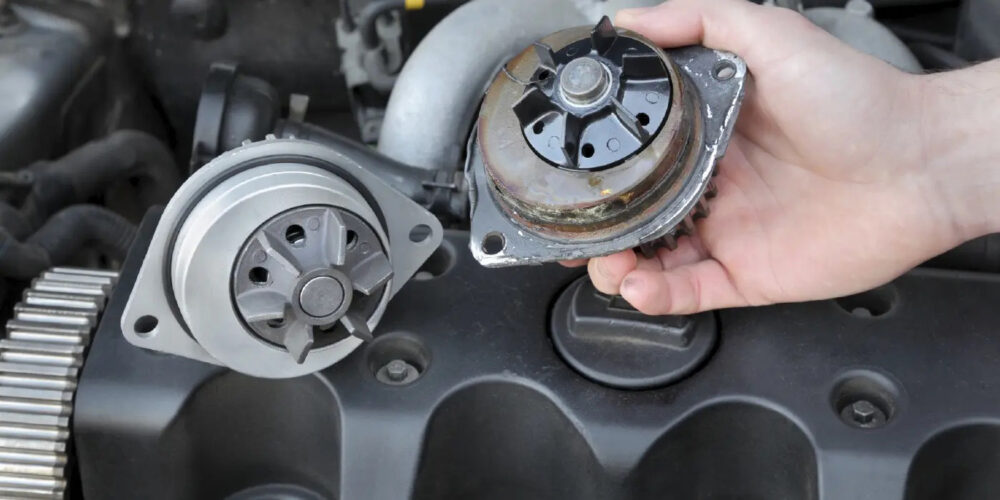By Andrew Markel
Two of the toughest applications for brake pads are the Honda Accord and Toyota Prius. Selecting the correct pad is critical not only for the safety of the vehicle but the profitability of the shop you serve.
Honda: Seventh-Generation Accord Parts Selection
The seventh-generation Honda Accord (2003-’08) and Acura TL are some of the top-selling vehicles in the U.S. They have a very simple brake system to service, but it can be prone to brake noise if the wrong parts are used.
The seventh-generation Accord brake system comes in two flavors with two different rear brake systems. Systems are made by either Akebono or Nissin. When ordering pads, make sure you have a VIN and production date. Also, find out if the vehicle is equipped with ABS and/or TCS. Some brake part electronic catalogs might ask for the trim level. The smaller brake system came with 15-inch wheels and the larger system came with 16-inch or larger wheels. But, some special editions and later models violate these rules.
The DX model is the low-end of the range and is equipped with the smaller front brakes and rear drums. The EX version is the mid-range model and can have either brake system depending on if it is equipped with 4-cylinder or V6. Also, the level of ABS and stability control will determine if it is equipped with rear disc brakes. The next trim level is the LX. These models typically have the larger front brakes and rear disc brakes.
Don’t skimp on the brake pads
All the Accords of this generation are designed to work with ceramic friction formulations. It is critical that a similar friction materials goes back on the vehicle. If an aggressive semi-metallic friction material is used, more heat could be transferred to the caliper piston, making it possible to boil the brake fluid. The problem becomes even worse if you use a cheap brake pads set that does not include a set of shims.
Don’t skip on the shims
Both the 4-cylinder and V6 brake systems have sophisticated shim sets that clip to a backing plate rather than being glued or staked. This design creates a “boundary layer” preventing vibrations from being transmitted to the caliper and knuckle. All models use a two-piece shim on the front in-board pad as stock.
Honda engineers use this design to stop the vibrations so Honda can use a lighter caliper and knuckle to increase gas mileage and improve ride quality. If you think you can out-engineer a bunch of Honda engineers with a cheap shim and tube of brake lube, you may have a comeback in your future.
Prius: 70,000-mile brake pad?
It is not uncommon to find a Prius with 70,000 or 100,000 miles on the original set of pads. This is due to regenerative braking creating the majority of braking force. But, this does not mean that other components, like hardware and rubber seals/boots, can’t fail sooner.
The Prius has unique requirements for the brake system. On 2001-2004 models, the hydraulic brakes were not used until the vehicle was below 7 mph or if the vehicle had to make a hard stop.
The majority of the time, the pads never reached conventional operating temperatures and corrosion could occur between the backing plate and friction material due to the fact that the pads never dried out. On some vehicles, the corrosion between the friction material and backing plate would cause a complete separation.
Always use a high-quality pad for the Prius and other hybrid applications to avoid problems. It is not a question of better performance. It is a question of quality and engineering.
Since it is impossible to perform a conventional break-in/bedding procedure on the test drive, make sure the manufacturer promises excellent performance right out of the box. Also, applying a non-direction finish with a ball hone will help the new pads evenly deposit a layer of friction material to the new rotor.











